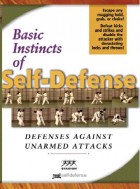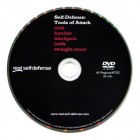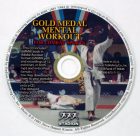Knowing how to use common street weapons is critical in cases of armed attacks
This self-defense tip continues to deal with the need for proficiency with the weapons and tactics that one is likely to encounter. To put it briefly, you and your training partners have to be proficient in the real methods of attack for developing effective defensive skills. The examples given in tips no. 24 and no. 25, were of unarmed attacks. The need for proficiency with the weapons and real tactics that you are likely to encounter is even more important when learning defenses against armed attacks.
The point of becoming proficient with your opponent’s techniques is made well by Nicolas Gill, the famous Canadian judo wrestler (interview by Wayne Dickinson [Judo Journal vol. 24, no. 1]):
“The best way to block something is if you actually can do it yourself . . . so you really understand how it is working and what the way is to block it.”
Nicolas Gill followed his own advice and learned how to neutralize the tactics of his main opponent, Stephane Traineau, to defeat him at the Olympics. His advice applies equally well to unarmed and armed confrontations.
Practicing and becoming proficient with weapons your attacker may use give you the following advantages in self-defense:
- You anticipate the potential danger because you know how fast and from what distance the weapons can be used. Once you see the weapon, you know what to expect and in what manner it will probably be deployed.
- You do not panic. The situation is familiar and you do not freeze while thinking “What is this?” “Why is this happening to me?” Or, “What do I do now?”
- Through systematic practice with weapons, you may reach a higher level of skill than that of your attacker.
This last point is worth elaborating. Being more skilled with weapons really pays off. Even if you do not have any weapon with you at the time of attack, seeing that the attacker handles his weapon worse than you would, will boost your confidence. High confidence will let you act decisively, without doubts and hesitation, instinctively doing what needs to be done. High confidence will let you use your knowledge of the weapon to take advantage of an attacker’s “weak” moments, which a less skilled or more hesitant person would miss.
To learn how the typical street weapons (club, hatchet, blackjack, knife, razor) are used and how to practice with them, order the video Self-Defense: Tools of Attack.
Recommended reading:
Self-Defense Tip #28 — How Does the Video Self-Defense: Tools of Attack Differ from Other Videos on Self-Defense and Hand-to-Hand Combat?
Self-Defense Tip #114 — About Weapons
Self-defense tip from Thomas Kurz, co-author of Basic Instincts of Self-Defense and author of Science of Sports Training, Stretching Scientifically, and Flexibility Express.
Self-Defense Moves
For your defense moves to work under stress they must be based on your natural, instinctive reactions, require little strength and limited range of motion, and be proven in fighting experience.To learn how your natural reactions can instantly defeat any unarmed attack, see the video Basic Instincts of Self-Defense.
Defend Against Weapons
To defend against weapons you have to know how they are used. Also — every stick has two ends … the weapon of attack may become a weapon of defense in your hand …To learn how the typical street weapons (club, knife, razor) are used by an experienced streetfighter and how to practice with them, see the video Self-Defense: Tools of Attack — Club, Hatchet, Blackjack, Knife, Straight Razor.
Mental Toughness
Staying cool under pressure is more important for self-defense than being physically fit and technically skilled. If you can’t control your mind what can you control?To learn mental techniques that let you calmly face any threat and act rationally in the heat of a fight, click here.
For a complete list of our products, click here.







